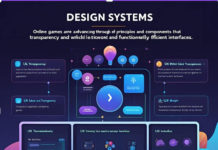Published in cooperation between AskGamblers and King City Rustler
Unless you have lived under a rock since 2010, you’ll understand just how transformative and disruptive digital content and streaming have been in the entertainment industry. It might seem like a stretch to say it’s still growing in popularity, given that the industry has onboarded billions of new customers over the last decade. However, it still has room to grow by any given metric, especially in emerging markets.
Understanding the Power of Digital Media
Multiple industries have been able to capture the power of digital media. While juggernaut streaming companies made these moves in the 2000s, other entertainment companies made them in the mid-1990s.
Online casinos captured the broader attitude of society’s shift online much earlier. One key reason they did this was to provide a more expansive range of marketing ideas, including globally popular marketing strategies such as free spins. They offered, and continue to offer, a cost-effective way to explore a casino’s arsenal. Some free spins are included in a matched deposit offer, while other bonuses will be given immediately, before you have deposited your funds.
While free spins at online casinos aren’t the only successful marketing strategy casinos use, they have helped shine a light on just how popular new marketing ideas are in digital entertainment. If we compare this to streaming services, it would be similar to Disney+ offering new users free access for the first week.
It’s an idea that has now been discontinued as they have established a significant market share. Still, it goes to show that if a marketing idea is good enough, whether it is free spins or free subscriptions, it will help fuel the popularity of digital-driven entertainment. Online gambling is illegal in California. Know the laws and rules governing your area.
What Is Driving the Current Demand?
In the early days of streaming, most of it was via PC and laptop. In the early 2010s, smart televisions with app capability were not widely used and were expensive. Although smartphones were making giant leaps in connectivity and affordability, we were still a few years off the most significant changes that smartphones ushered in.
The future of media streaming now spreads across several different markets and devices. Millions of people use their phones, tablets and iPads to access digital content. As with so many other seismic changes that have taken place in the world over the last decade, many of them can be attributed to the Internet and its enormous changes in accessibility.
Podcasts are replacing talk shows and using streaming sites like Spotify to attract a global audience. Video streaming sites like YouTube are replacing radio and talk shows. Instead of cable TV stations offering avenues for people to watch movies, it’s now Netflix, Disney+ and even localized streaming companies taking up the lion’s share of the market. Digital content is cheaper to access, 24/7 and often more relevant and current than much of the content people obtain from traditional sources.
Obviously, some of this can come at a cost, including issues with fact-checking, especially on social media sites like Twitter (now known as X), which has significant problems with misinformation and poorly-resourced news. It’s not a perfect solution, but it’s accessible and much cheaper, and if something costs less and still does the trick, it will gain more popularity in a global market. It’s a simple case of supply and demand.
Bespoke Content
For those of us who still remember terrestrial television in the 1990s, content was more limited and didn’t have the features of today’s streaming services. By the early 2000s, although cable TV had developed services where you could record and rewind the TV, you were still fairly limited with the amount of TV and media you could actually access.
In the streaming age, there’s an embarrassment of riches; there’s almost too much of a choice. You can find anything on YouTube, there are billions of songs on Spotify and any of the top streaming giants have thousands of TV series or movies you can immediately watch on demand.
Advanced algorithms now create playlists and ideas based on your listening and viewing. While this bespoke content was a bit hit and miss in the early days of streaming, advances in this technology have made it much more popular. Not only is this helping keep up with current demand, but it is also shaping the industry’s future and continuing to drive popularity.
Tracking Consumer Demand
While some areas of streaming might be becoming more saturated due to the number of big providers entering the space, there hasn’t been a considerable shift back toward conventional methods.
Hugely popular areas of entertainment, such as sports streaming—which, for many, are the last bastion of traditional entertainment—are also moving toward streaming services. This includes the NBA playoffs on Disney+ and the WWE on Netflix, to name a few high-profile examples.
However, many people now use digital services to obtain all things sports, whether looking for sports news, joining online communities and connecting with people who follow the same teams or using sites like YouTube to check out highlights. Digital platforms now encompass all levels of the industry—and now that it has essentially monopolized how we interact with sporting and broader entertainment, it goes a long way to explain why the popularity of digital entertainment and streaming has soared and why it’s looking like it’s going to have an equally bright future.
Conclusion
The remarkable success of streaming and digital content has many facets; an industry doesn’t become a multi-billion-dollar success due to one or two factors. However, there’s no denying that some key factors, such as accessibility, cheaper Internet costs and a vast global push from streaming companies, have resulted in digital content and streaming rising to the top of the entertainment world.
As this accessibility continues to channel through new and traditional methods, whether it’s the biggest streaming services, such as Netflix, or the newest social media forms of entertainment, like TikTok, digital content will undeniably be the interface of the future.
We could even see a future whereby older forms of media, such as terrestrial TV and radio, are phased out as younger generations exclusively get their content from streaming platforms and digital entertainment brands.















